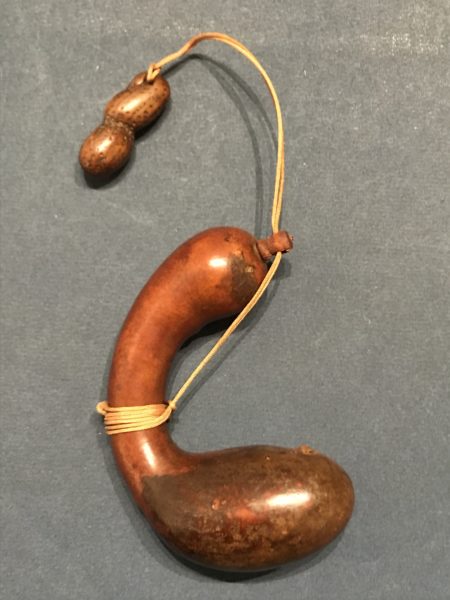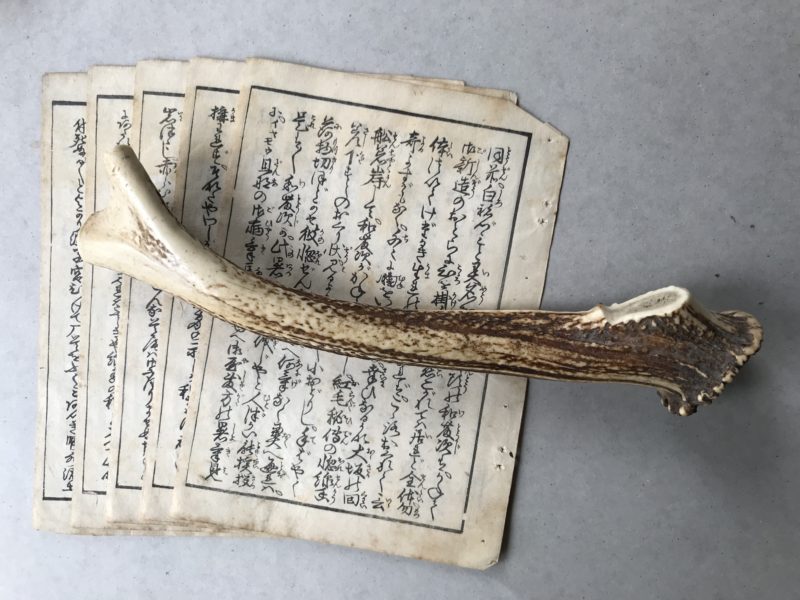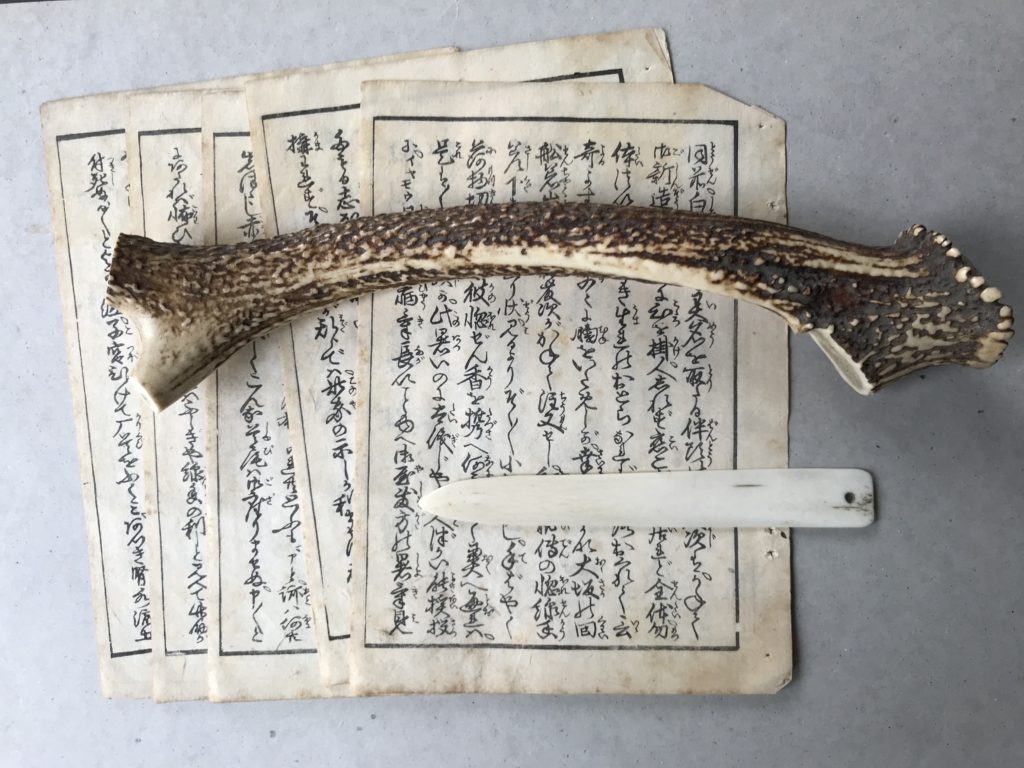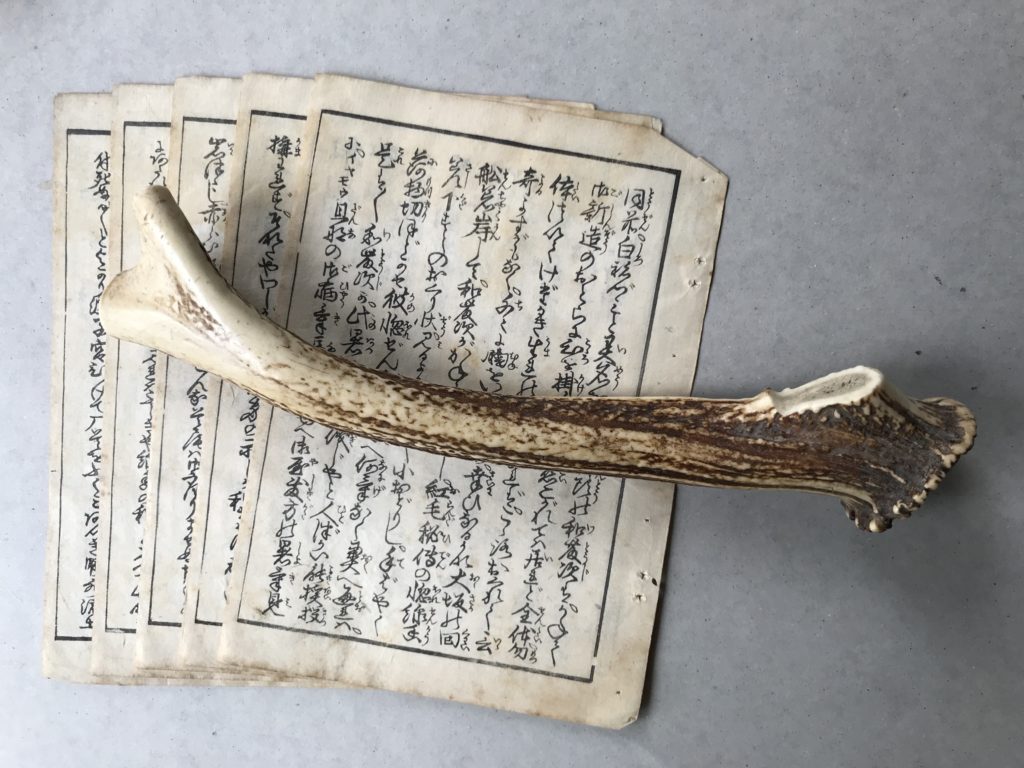A friend of mine who always comes with a present handed me this flask gourd saying “I think you can appreciate this.” “I sure can,” I said and thanked him. It obviously belongs to the larger category of objects known as sagemono (提物), items one wants to have at hand but preferably with one’s hands free, and thus suspended from the sash, the obi. As it is pretty small, measuring not even eleven centimetres from top to bottom, it can hardly have served as a water bottle of some kind. Maybe something stronger? Like sake or shochu? That too would seem quite unlikely.

What we cannot fail to notice is that the bottom part of the gourd is somewhat discoloured, possibly as a result of what it used to contain. It was obviously carried hanging from one’s obi using a wooden netsuke carved in the shape of a peanut. A search on the internet learns that peanut cultivation started in Japan from 1875, notably in Kanagawa and Chiba Prefectures, but this set of a flask gourd and a peanut netsuke would date from much earlier. Indeed, a search for the Japanese word for peanuts, rakkasei (落花生), tells us that these were first introduced into Japan in 1706, often going by the name of Nankinmame (南京豆) or ‘Nanking nuts.’ The Dutch East India Company?
The peanut-shaped netsuke is fastened to the gourd by a silken cord that is led through a hole in the wooden plug of the flask gourd, and then wound around the narrow middle of the gourd. From the netsuke to the wooden plug, the cord measures almost eleven centimetres, absolutely no problem for the standard width of the 82 millimetres wide obi – if I may believe the one obihisami netsuke I have at hand. Still, all of this didn’t really help me getting a better understanding of the original function of the gourd.
Until just two weeks ago, with some guests joining us for dinner who suggested that this could well be a container for some kind of medicine, something like a kusuri-ire if that could be what such a thing was called. As for its size, this would certainly be possible, and one can also well imagine that someone who is aware of his possible problems of health would like to always have some cure at hand. Trying to get some of the remaining contents out just yielded a very small bit of dust, probably not enough to find out more, or … maybe?
Anyway, it is very well imaginable that not anybody who had to be prepared to have to take his medicine regularly would also be able to afford some nice medicine cases of the inrō type, often lacquered, and generally offering space for three or four different kinds of medicine. But during much of the seventeenth and eighteenth centuries, these were also a most direct luxury item well-suited to show off. It is not for nothing that some writer in the early nineteenth century remarks that ‘nowadays, almost anybody carries an inrō, often not containing any medicine at all.’
The internet also tells – but never believe the internet is what I repeatedly told my students – that the ‘amino acid L-arginine in peanuts is helpful for improving sexual function in men.’ Is that maybe some allusion that the flask gourd is suggesting when you turn it 90 degrees to the right?


